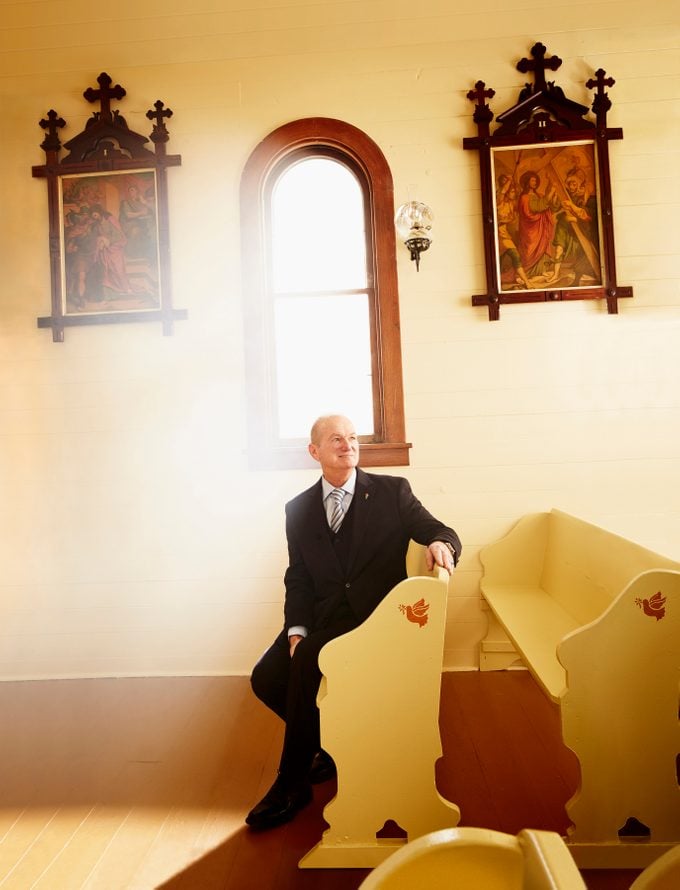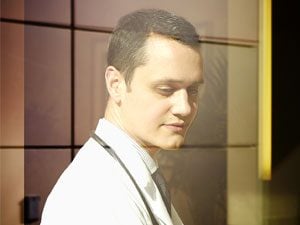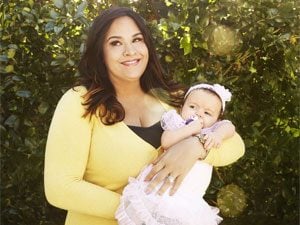5 Stunning Medical Miracles That Doctors Can’t Explain
Updated: Aug. 30, 2023
Medicine has come a long way. But there is still so much left unknown about the human body—like these five medical miracles scientists can’t explain.
Our understanding of the human body is advancing faster than ever. In 1950, new medical knowledge doubled at a rate of about 50 years—today, it doubles every 73 days. And yet there is still so much we don’t know about human biology. Researchers estimate there are about 4,000 types of bacteria found in our gut but have no clue what 70% of them do. We still don’t know for sure why we dream, have different blood types, or develop unique fingerprints. Even just this year, scientists discovered a new body part that helps us chew our food.
That’s why it’s no surprise that doctors still get stumped by some medical mysteries (though, thanks to today’s rapidly growing knowledge base, they keep solving previously puzzling cases, too.) Still, in spite of all our modern scientific breakthroughs, these five head-scratching medical miracles remain unexplained.
8 New Breast Cancer Treatments Some Oncologists Are Calling ‘Mind-Blowing’

The Church That Cured Cancer
It’s hard to say which was in worse shape: the run-down century-old church or the cancer-ridden 56-year-old man perched on its crumbling steps. For years, Greg Thomas would sit on those very steps and pray when he walked his dogs along the country lanes in rural Minnesota. But in May 2009, he learned that the searing headaches, earaches, and jaw aches that had plagued him for the past year were due to inoperable head and neck cancer. It had progressed so far that the doctors told Greg’s family to start planning his funeral.
“I was sitting at the church one evening, pouring my heart out to God,” Greg says. “I kept looking at the building and the shape it was in. I said, ‘Before I leave this earth, Lord, I’d like to do something for you.’”
Greg decided that something was to fix the peeling paint and the leaking roof, the mangled steps, and the rotting floorboards. He approached the church’s association with a deal: He would completely repair the building on one condition: “I get a key to the front door, so I can go in anytime I want to worship.” He warned that it would be slow going—he had just undergone three rounds of chemotherapy along with 40 sessions of radiation and had lost 66 pounds. They said yes anyway.
Incredibly, as Greg scraped paint and replaced boards, he felt himself growing stronger every day. The more he worked on the church, the better he felt—he didn’t even need the strong prescription pain meds his doctor had prescribed. “My oncologist was blown away,” Greg says. “She said, ‘Whatever you’re doing, keep on doing it.’”
As Greg continued to rehabilitate the church, medical scans revealed some startling news: His tumors were shrinking. Four years and 23 days after Greg’s diagnosis, his doctors were able to remove his feeding tube—the one they’d said he would have for the rest of his life—and he ate solid food again. Today, Greg’s tumors are gone. He is considered officially in remission and no longer needs follow-up tests.
And the church? After five years of Greg’s labor and love, it has been restored to its former glory, too. Greg says he will probably always be involved in maintaining its beauty (he still wants to replace some windows, for example). “While I was restoring the church,” Greg says, “God was restoring me.”
21 Reassuring Things Scientists Wish You Knew About Cancer
The Role of a Lifetime
The silent killer. That’s what doctors call an abdominal aortic aneurysm (AAA).
The extremely dangerous condition—in which the main blood vessel shuttling blood to the abdomen, pelvis, and legs enlarges—can balloon up for years without any symptoms. But if the aneurysm bursts, it is often fatal.
Pretending to have this silent killer was Jim Malloy’s assignment as a “medical actor” one day in February 2013. Over the years, Jim, then a 75-year-old retired engineer, had faked all manner of medical maladies so that students at the University of Virginia School of Medicine could practice diagnosing him. Really, it was just a fun part-time retirement job.
When Ryan Jones, a third-year medical student, walked into the room, Jim followed his script for an AAA: He complained of lightheadedness and stomach pain. But when Ryan pushed down on the center of Jim’s abdomen, he was shocked to feel a pulsing mass—it appeared to be an actual aneurysm.
“I stepped quickly back, confused,” Ryan says. “I tried to get Mr. Malloy to break character and tell me that he knew he had an aneurysm. But he wouldn’t.”
Ryan’s attending physician told Jim he should see a cardiologist, but it was hard for Jim to take the advice seriously. “I didn’t think I had any symptoms,” Jim says. He felt totally fine, and he had gotten a clean bill of health from his primary care doctor two weeks earlier.
When he did get an ultrasound, it showed that his AAA measured six centimeters—with the potential to rupture. Doctors immediately scheduled surgery and inserted a stent to deflate the aneurysm, saving his life. “I had no idea anything was going on, and I would have just gone about my business,” Jim says. “I’d probably be dead.”
Ryan agrees. “It was an amazing coincidence that he was volunteering for that case. If he had been pretending to have anything else, I wouldn’t have done that part of the exam, and I wouldn’t have found it,” Ryan says. “He was in the right place at the right time.”
Perhaps no one is more aware of this lifesaving good fortune than Jim’s wife, Louise. “Soon after Jim’s surgery, I met two women whose husbands bled out and died from an AAA,” she says. “We are so grateful to Ryan.”
9 Signs Your Back Pain Is Actually an Emergency
Battling a Deadly Brain-Eating Amoeba
Fight like a girl. That’s what 12-year-old Kali Hardig’s parents told her on Friday, July 19, 2013.
There was nothing else to say. It was impossible to believe that just the day before her crushing headache and relentless nausea started, Kali and two pals had been giddily playing king of the hill at a water park near Benton, Arkansas. It was there doctors told the devastated parents, that Kali must have gotten water infected with a brain-eating amoeba up her nose. The creature then traveled along her olfactory nerve and into her brain, where it began feasting on her brain tissue—a condition called primary amoebic meningoencephalitis. The doctors said it was about 99 percent fatal—only two people in North America had ever survived. “We had to tell her parents that it was very likely she would not be alive in 48 hours,” says Matt Linam, MD, the infectious disease specialist who treated her. (Here’s how to decode confusing doctor-speak.)
Still, doctors at Arkansas Children’s Hospital jumped into action: they pumped Kali’s body full of antifungals and antibiotics as well as a rare, unapproved German drug they got from the Centers for Disease Control and Prevention (CDC); lowered her body’s temperature to 93 degrees, putting her in a medically-induced coma in an attempt to reduce brain swelling; hooked her up to a ventilator, then a dialysis machine for her failed kidneys. For two weeks, Kali’s medical team worked around the clock to keep her alive—balancing the complex job of preventing low blood pressure but stopping episodes of high blood pressure that worsened her brain swelling.
“We had good hours and bad hours, not days,” says Dr. Linam. Then slowly, Kali’s brain swelling stabilized. Doctors decreased her sedation and increased her body temperature, unsure if she would be the same little girl when—or if—she woke up. “We just didn’t know,” Dr. Linam says, “but two days later, she did a thumbs-up, and her parents knew she was still in there.”
Kali would be in the hospital for eight more weeks, relearning the most basic functions, like swallowing. But eventually, she officially became survivor number three.
Doctors don’t know exactly why she lived. (A 12-year-old Florida boy, diagnosed days after Kali, received the same German medicine but didn’t survive.) “Number one, it was God’s grace,” Dr. Linam says. “Other than that, it was countless little things that went her way, countless little miracles that happened every day and made the difference between life and death.”
21 Health Secrets Your Gut Is Trying to Tell You
She Was “Dead” for 45 Minutes
They literally ran her back to the operating room.
Forty-year-old Ruby Graupera-Cassimiro had just had a completely normal C-section, giving birth to a beautiful baby girl on September 23 (these are the myths of having a C-section all women should know). But when her medical team moved her to the recovery room, she fell unconscious. Suddenly, Ruby—now a mother of two—was in full cardiac arrest.
Jordan Knurr, MD, her anesthesiologist at Boca Raton Regional Hospital in Florida, immediately intubated Ruby so a machine could breathe for her. He called a code, and about a dozen other doctors and nurses crowded into the room, frantically giving advanced cardiac life support. “For more than two hours, she was having life-threatening heartbeats,” Dr. Knurr says. Most scary was when Ruby had a pulseless rhythm—her heart was beating but not pumping any blood throughout her body—and doctors delivered constant CPR compressions for 45 minutes straight to try to get her heart working normally again.
After about two hours, her doctors knew there was no hope. They brought her extended family into the room to say goodbye. After Ruby’s family returned to the waiting room, where they, along with a few nurses, frantically prayed on their knees for a different outcome, the doctors stopped pumping her chest. They were ready to call her time of death.
“I was seconds away from turning off the ventilation machine when one of the nurses shouted, ‘Stop!’” Dr. Knurr says. “Without any medicine or CPR, Ruby’s heart began to beat on its own for the first time in two hours. It is just indescribable.”
It turned out that some amniotic fluid had leaked into the uterus and traveled through Ruby’s bloodstream and to her heart. Called an amniotic fluid embolism, it causes an air block in the heart and prevents blood from flowing. “These embolisms are rare, and we don’t know a lot about them,” Dr. Knurr says. “Usually the patient passes away or has significant brain damage.” (Her doctors don’t know what happened to the amniotic debris; they assume it dissolved on its own.)
Not only did Ruby live, but “she is in perfect health. It’s almost as if this never happened,” says Dr. Knurr. “It’s a miracle. I’m not a highly religious person, but you just don’t see this happen.” The next morning, Ruby’s breathing tube was removed. Four days later, she walked out of the hospital with her newborn daughter, Taily—without even a broken rib from all the chest compressions.
“Someone else was running the show that day; there’s no doubt in my mind,” Ruby says today. “I don’t know why God chose me, but I know he gave me this life again for a reason.”
14 Truths No One Tells You About Giving Birth
The Heart That Healed Itself
He had been throwing up for four days. But clearly, this was not a mere stomach bug.
On August 17, 2012, 23-year-old Michael Crowe “froze up”—eyes open and staring into space—on the couch. He quickly snapped to, but when it happened again a few minutes later, his mother rushed him to the local emergency room.
There they learned that Michael was in real trouble. His heart was pumping out blood at just 25 percent, an alarmingly low rate. By the time he was transferred to Nebraska Medical Center in Omaha an hour later, it was down to 10 percent. A virus was causing acute myocarditis, inflammation of the heart muscle. If it got worse, he would need a heart transplant. With Michael’s family surrounding his bed, the doctors asked him to sign papers—while he still could—for that transplant. “They said I had only a 30 percent chance that my heart would recover,” Michael says. “I remember thinking, I can take those odds. I haven’t won the lottery yet, I’m Irish, I’m due for some luck. I was strangely calm.”
His doctors, however, were not. “His heart failure was so bad,” says his cardiologist, Eugenia Raichlin, MD. “The rate of mortality is huge.” They immediately hooked him up to an ECMO, an external heart and lung machine, to pump his blood while his heart couldn’t. But it was a short-term fix, and Michael’s health continued to decline. Spiking fevers led to convulsions; ice cooled him but dropped his oxygen levels. “It was a balancing game just to keep me stable,” Michael says.
44 Things Heart Doctors Do to Protect Their Own Hearts
He desperately needed a heart transplant.
For 17 days they waited, while Michael’s condition continued to worsen. His heart stopped twice—once for an entire day (being hooked up to the ECMO machine prevented him from dying). Doctors had to fend off blood clots and excess bleeding.
At 6:30 in the morning on Labor Day, Michael’s doctors got the phone call everyone had been waiting for: A heart would be available that night. But a few hours later, they made a devastating discovery. Michael had developed a blood infection; a transplant would be too dangerous.
As Michael’s family despaired, Dr. Raichlin noticed something unusual: His blood pressure, which should have remained constant because of the heart-lung machine, was actually rising. She ordered a test, which revealed that the left side of his heart was working at near-normal capacity. In disbelief, she ordered another. Again, the same astounding results.
After four days hooked up to a different machine that assisted only the right side of his heart, Michael no longer needed a transplant. His heart had completely, miraculously healed itself, his body eradicating the virus on its own. “He overcame everything,” Dr. Raichlin says. “He was very debilitated, but he rebuilt himself.”
Many patients with Michael’s condition die, get a heart transplant, or survive but have permanent heart tissue damage. But today, his heart is in perfect shape. “I’m so grateful that I got a second chance at life,” he says.
- 8 Ways to Save on Your Health Care
- Here’s What Happens to Your Liver When You Quit Drinking Alcohol
- 4 Things Your Eye Color Might Reveal About Your Health
- So, Why Does Your Nose Always Run When It’s Cold?
Additional writing and reporting by Leslie Finlay.

















